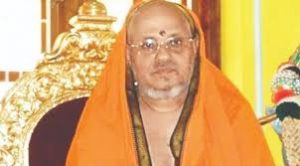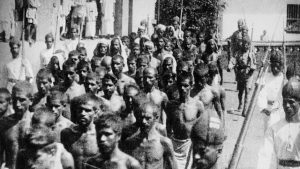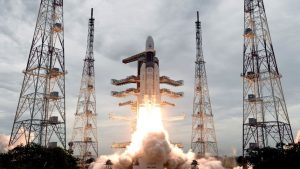Daily Current Affairs for Government Exams:
Today Current Affairs: 7th September 2020 for UPSC IAS exams, State PSC exams, SSC CGL, State SSC, RRB, Railways, Banking Exam & IBPS, etc
Table of Contents
Contents:
- Foreign Contribution Regulation Act (FCRA):
- Kesavananda Bharati Ji.:
- Moplah Uprising:
- Chandrayaan-3:
- Project Dolphin.
- Other important current affairs:
1. Foreign Contribution Regulation Act (FCRA):

The Union Ministry of Home Affairs has suspended licenses under the Foreign Contribution Regulation Act (FCRA), 2010 of the six Non-Governmental Organisations (NGOs).
- The suspension of the FCRA license means that the NGO can no longer receive fresh foreign funds from donors pending a probe by the Home Ministry.
Key Points
- Of the six NGOs, four are Christian associations, Ecreosoculis North Western Gossner Evangelical in Jharkhand, the Evangelical Churches Association (ECA) in Manipur, Northern Evangelical Lutheran Church in Jharkhand, and New Life Fellowship Association (NLFA) in Mumbai.
- The two other organizations whose licenses were suspended are the Rajnandgaon Leprosy Hospital and Clinics, Chhattisgarh, and the Don Bosco Tribal Development Society, Tamil Nadu.
- The reasons for the suspension have not been specified by the government.
- Earlier, in 2017, USA- based Christian donor, Compassion International, was forced to stop operations in India after the Home Ministry found that it funded NGOs that encouraged religious conversions.
Controversies Related to FCRA
- The FCRA regulates the receipt of funding from sources outside of India to NGOs working in India. It prohibits the receipt of foreign contribution “for any activities detrimental to the national interest”.
- The Act also held that the government can refuse permission if it believes that the donation to the NGO will adversely affect “public interest” or the “economic interest of the state”.
- However, there is no clear guidance on what constitutes “public interest”.
- The FCRA restrictions have serious consequences on both the rights to free speech and freedom of association under Articles 19(1)(a) and 19(1)(c) of the Constitution.
- The right to free speech is affected in two ways:
- By allowing only some political groups to receive foreign donations and disallowing some others, can induce biases in favor of the government.
- NGOs need to tread carefully when they criticize the regime, knowing that too much criticism could cost their survival.
2. Kesavananda Bharati Ji.:

Prime Minister Narendra Modi expressed grief over the passing away of Kesavananda Bharati Ji.
- Kesavananda Bharati was the head seer of the Edneer Mutt in Kasaragod district of Kerala since 1961.
- He left his signature in one of the significant rulings of the Supreme Court when he challenged the Kerala land reform legislation in 1970.
- The Kesavananda Bharati judgment is a landmark decision of the Supreme Court of India that outlined the basic structure doctrine of the Constitution.
- Justice Hans Raj Khanna asserted through the Basic Structure doctrine that the constitution possesses a basic structure of constitutional principles and values.
- The doctrine forms the basis of the power of the Indian judiciary to review and override amendments to the Constitution of India enacted by the Indian parliament.
Doctrine of the Basic Structure:
- The origins of the basic structure doctrine are found in the German Constitution which, after the Nazi regime, was amended to protect some basic laws.
- Learning from that experience, the new German Constitution introduced substantive limits on Parliament’s powers to amend certain parts of the Constitution which it considered ‘basic law’.
- In India, the basic structure doctrine has formed the bedrock of judicial review of all laws passed by Parliament.
- No law can impinge on the basic structure. What the basic structure is, however, has been a continuing deliberation.
- Parliamentary democracy, fundamental rights, judicial review, secularism- are all held by courts as the basic structure, the list is not exhaustive.
- It is the Judiciary that is responsible to decide what constitutes the basic structure.
Implications of the Judgement:
- Politically, as a result of the verdict, the judiciary faced its biggest litmus test against the executive.
- The government ignored the opinion and superseded three judges.
- Within less than two years of the restoration of Parliament’s amending powers to near absolute terms, the Forty-second amendment was challenged before the Supreme Court by the owners of Minerva Mills (Bangalore) a sick industrial firm which was nationalized by the government in 1974.
- Basic structure doctrine was reaffirmed in the Minerva Mills and later in the Waman Rao case, 1981.
3.Moplah Uprising:

The Indian Council for Historical research (ICHR) has constituted a three-member committee to review the entries in the book Dictionary of Martyrs: India’s Freedom Struggle 1857-1947, which was released by the Prime Minister on 7th March 2019.
- The book contains an account of the martyrs from India’s First War of Independence in 1857, to India’s Independence in 1947.
- The project for its compilation was commissioned by the Ministry of Culture to ICHR to commemorate the 150th anniversary of the uprising of 1857.
Key Points
- Background: A review report submitted to the Indian Council of Historical Research (ICHR) by one of its members in 2016 had recommended the delisting 387 names including victims of Wagon Tragedy and Malabar/Moplah Rebellion leaders Ali Musliyar and Variamkunnath Ahmad Haji from the Dictionary of Martyrs.
- The year 2021 will mark the 100th year anniversary of the Malabar rebellion of 1921.
- There has been recent controversy on a film being released on this issue.
- Issues involved: The review report of 2016 noted that “almost all the Moplah outrages were communal. They were against the Hindu society and done out of sheer intolerance.”
- The report also said that none of those who died in the Wagon Tragedy were freedom fighters of India as they hoisted the Khilafat flag and established Khilafat and Khilafat courts for a brief period.
- The issue of forced conversion of Hindus into Islam by the leaders of the rebellion were also raised by many organizations.
- However, many historians view this as one of the first cases of nationalist uprisings in Southern India.
Malabar Rebellion or Moplah Uprising or Mapillah Revolt (1921) - Reasons:
- The trigger of the uprising came from the Non-Cooperation Movement launched by Congress in 1920 along with the Khilafat agitation.
- The anti-British sentiment fuelled by these agitations affected the Muslim Mapillahs (also known as Moplahs) of the South Malabar region of Kerala.
- New Tenancy Laws: After the death of Tipu Sultan in 1799 in the Fourth Anglo-Mysore War, Malabar had come under British authority as part of the Madras Presidency.
- The British had introduced new tenancy laws that tremendously favored the landlords known as Janmis and instituted a far more exploitative system for peasants than before.
- The new laws deprived the peasants of all guaranteed rights to the land, share in the produce they earlier got, and in effect rendered them landless.
- The Communal Angle: Most of the landlords were Namboodiri Brahmins while most of the tenants were
4.Chandrayaan-3:

Minister of State for Space Dr. Jitendra Singh has said that the launch of Chandrayaan-3 may now take place somewhere in early 2021. It is likely to be launched in early 2021.
- It will be a mission repeat of Chandrayaan-2 and will include a Lander and Rover similar to that of Chandrayaan-2, but will not have an orbiter.
- Planned to land on the South Pole of the Moon, Chandrayaan-2 was launched on 22nd July in 2019. However, the lander Vikram hard-landed on 7th September 2019, crashing India’s dream to become the first nation to successfully touch down on the lunar surface in its maiden attempt.
- With the Artemis program, NASA will land the first woman and next man on the moon by 2024.
- India’s first-ever human space mission Gaganyaan aims to send a three-member crew to space for a period of five to seven days by 2022 when India completes 75 years of Independence.
Chandrayaan-1 Findings:
- The recent images sent by Chandrayaan-1 suggest that the moon may be rusting along the poles.
- Chandrayaan-1, India’s first mission to the moon, was launched by the Indian Space Research Organisation (ISRO) in 2008.
- Finding:
- Data from the Mineralogy Mapper (M3), one of the instruments on Chandrayaan-1, indicates the presence of hematite at the lunar poles.
- Hematite (Fe2O3) is a mineral which is a form of iron oxide, or rust, produced when iron is exposed to oxygen and water.
- The sign of this finding is that even though the surface of the moon is known to have iron-rich rocks, it is not known for the presence of water and oxygen, which are the two elements needed to interact with iron to create rust.
- Recently, the National Aeronautics and Space Administration (NASA) has found evidence of greater quantities of metals such as iron and titanium on the moon’s subsurface.
- Possible Reasons Behind Rusting along with the Lunar Poles:
- As per scientists at NASA, the earth’s oxygen could be driving the formation of hematite. Earth’s magnetotail (elongated region of the magnetosphere of the earth) ferries oxygen to the moon and also blocks 99% of the solar wind during certain periods of the moon’s orbit.
- The solar wind, a stream of charged particles that flows out from the sun, bombards earth and the moon with hydrogen.
- Hydrogen makes it harder for hematite to form. It is a reducer, meaning it adds electrons to the materials it interacts with.
- That’s the opposite of what is needed to make hematite or iron to rust, which requires an oxidizer, which removes electrons.
- Chandrayaan-1 Moon data indicates that the moon’s poles are home to water that scientists are trying to decipher.
5.Project Dolphin:

In his Independence Day Speech this year, Prime Minister Narendra Modi announced the government’s plan to launch a Project Dolphin. The proposed project is aimed at saving both river and marine dolphins.
- The Gangetic dolphin (Platanista gangetica) is one of five species of river dolphins found around the world.
- It is found mainly in the Indian subcontinent, particularly in Ganga-Brahmaputra-Meghna and Karnaphuli-Sangu river systems.
- The Gangetic dolphin population in India could be about 2,500-3,000.
- The Gangetic dolphin remains listed as endangered by the International Union for the Conservation of Nature.
- Wildlife Act Protection: After the launch of the Ganga Action Plan in 1985, the government on November 24, 1986, included Gangetic dolphins in the First Schedule of the Indian Wildlife (Protection), Act 1972. Vikramshila Ganges Dolphin Sanctuary was established in Bihar under this Act.
- Conservation Plan: The government also prepared The Conservation Action Plan for the Ganges River Dolphin 2010-2020, which “identified threats to Gangetic Dolphins and the impact of river traffic, irrigation canals and depletion of prey-base on Dolphins populations”.
- National Aquatic Animal: On October 5, 2009, the then Prime Minister Manmohan Singh, declared the Gangetic river dolphin as the national aquatic animal. Now, the National Mission for Clean Ganga celebrates October 5 as National Ganga River Dolphin Day.
Other important current affairs:
1. According to a report by research organization Climate Research Horizon, shutting down thermal power plants older than 20 years can save the government Rs. 53,000 crore over five years.
- The thermal power plants were analyzed in 11 States (Andhra Pradesh, Bihar, Chhattisgarh, Gujarat, Karnataka, Madhya Pradesh, Maharashtra, Tamil Nadu, Telangana, Uttar Pradesh and West Bengal), which account for nearly 50% of Power Distribution Companies (discom) dues.
- Shutting down old coal-based power plants and freezing those under construction can save over Rs. 1.45 lakh crore at a time when electricity demand has been hit due to Covid-19.
- The savings will accrue from avoiding retrofitting old plants to reduce the toxicity from their emissions.
- Replacing electricity from older coal plants with cheaper renewable sources will reduce the gap between cost of supply and revenue generation for discoms.
- With a lack of power demand due to Covid-19, and difficulties in revenue collection, discoms’ overdues to power generators have increased to Rs. 1,14,733 crore.
- The Centre is in the process of disbursing Rs. 1,00,000 crore by way of relief to discoms to enable them to pay their dues to generators.
- This is expected to be a temporary fix, given the lack of progress by discoms in reducing the gap between cost of supply and revenue raised.
- Further, surplus electricity generation capacity has seen many power plants struggle with low Plant Load Factors (PLF or capacity utilization), a situation that most experts predict will persist for the foreseeable future.
2.The government is planning to set up a new Development Finance Institution (DFI) essentially to fill the gap in long-term finance for infrastructure sectors.
- Proposed DFI: It will be used to finance both social and economic infrastructure projects identified under the National Infrastructure Pipeline (NIP).
- In April 2020, the Government released the final report on NIP for 2019-25, which had drawn up projects totaling investments of Rs. 111 lakh crore across roads, railways, energy, and urban sectors.
- The task force on NIP was headed by Atanu Chakraborty (economic affairs secretary).
NIP will enable a forward outlook on infrastructure projects which will create jobs, improve ease of living, and provide equitable access to infrastructure for all, thereby making growth more inclusive.
3. The fire that erupted on oil tanker MT New Diamond off Sri Lanka’s southeast coast was completely doused after joined efforts by a team of experts.
- MT New Diamond is a very large crude carrier.
- It is a Greek-owned vessel and under charter by Indian Oil Cooperation. The ship was built as Ikomasan by Mitsui Engineering & Shipbuilding in Chiba, Japan.
- On 3 September 2020, the ship caught fire off the eastern coast of Sri Lanka, resulting in the death of a Filipino crew member. On 6 September 2020, the fire was brought under control by the authorities after burning for nearly three days.
4. In the Union Territory of Jammu and Kashmir, the government announced the third phase of the ambitious Back to Village (B2V) program from October 2 to 12, this year.
- Terming the first two phases of Back to Village (B2V) as a huge success, the government said it is a unique program which received tremendous respect from the people when 4000 Gazetted Officers from J&K administration visited each and every Panchayat of J&K.
- The Phase-I of B2V was an introductory and interactive program to understand the people’s grievances and demands.
- While Phase-II focused on the devolution of powers to panchayats and tried to understand how these panchayats are functioning and what are the grievances and demands, “the Phase-III has been designed on the format for grievance redressal.”
- Next month will be a festival of public grievance redressal, festival of public service delivery and festival of delivery of development at gram Panchayat level.
5. Ministry of Micro Small and Medium Enterprises (MSME), further expanded support to the Agarbatti Industry, by issuing new guidelines on 4th September 2020.
- Setting up 10 clusters with proper marketing linkages under SFURTI (Scheme of Fund for Regeneration of Traditional Industries) scheme of the Ministry of MSME at a total cost of about Rs. 50 Crs, to benefit about 5000 artisans.
- 2 Centers of Excellence including one at Kannauj to be set up to develop machine making and promote product innovations
- 400 Automatic Agarbatti making machines as against 200 earlier and an additional 500 Pedal-operated Machines will be given to ‘Self Help Groups (SHGs)’ and individuals through 20 pilot projects, across the country with proper marketing and raw material supply tie-ups.
- The Khadi and Village Industries Commission (KVIC), one of the statutory organizations, under the M/o MSME, will implement the program.
6.G-20 countries have reaffirmed their commitment to ensuring education continuity and safety for all.
- A virtual meeting of G20 Education Ministers was held to discuss and share experiences of member countries in the three identified areas.
- These are
- Education Continuity in Times of Crises,
- Early Childhood Education and
- Internationalization in Education.
- The Education Ministers adopted a communique at the end of the meeting which recognizes the value of distance and blended teaching and learning and underscores the importance of enhancing access to high-quality education, professional development for educators, digital infrastructure and content.




